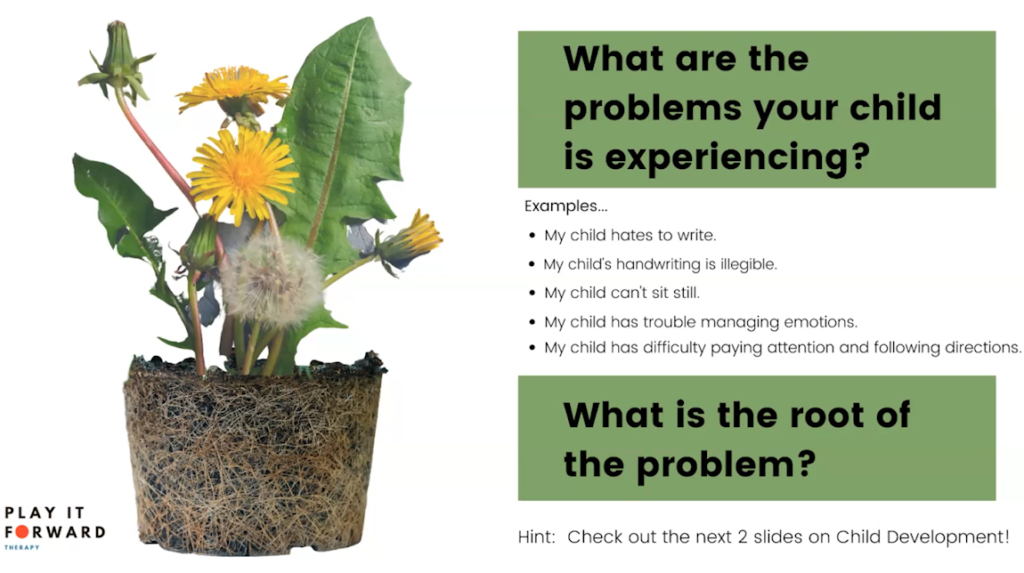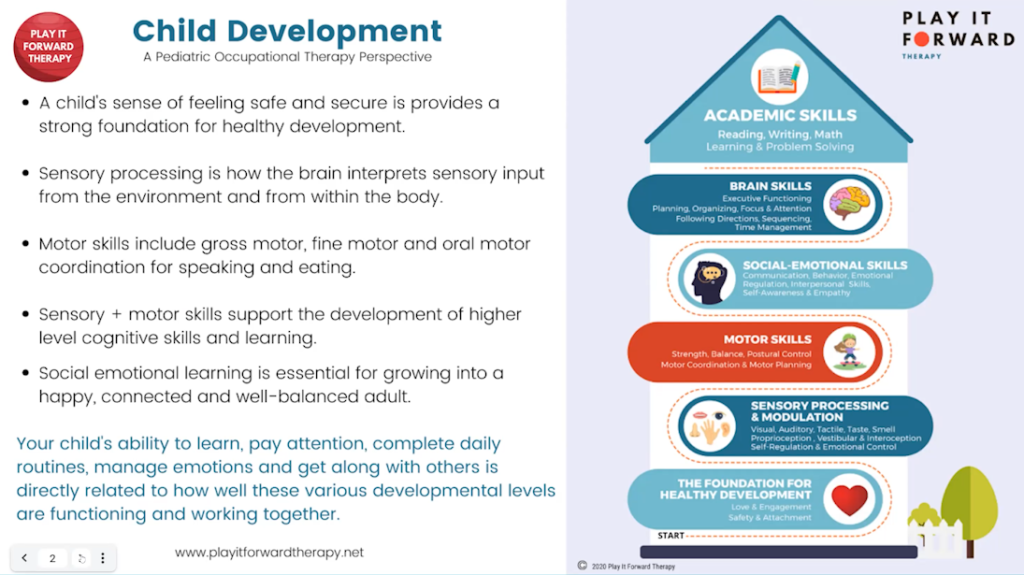Autism, General Information, Live Q&A, Sensory Processing
Home Strategies OT for Autism: Q&A with Jessica McMurdie, Bellevue, WA

Enjoy this replay from our live Q&A chat on Facebook with Jessica McMurdie on “OT at Home: At-home Strategies”
Feel free to utilise the “cheat sheet” & summary below the video for quick references points and time stamps of various topics in the video.
Quick Summary & “Cheat Sheet” for
“OT for Autism: Helpful Strategies at Home”
“We don’t always get the best version of our kids at home because they’re closest to us. We will see those meltdowns. But it means they’re comfortable with us and feeling secure.
1. Use the Dandelion metaphor graphic to visualize how to become a sensory detective to get to the root of the problem. (5:52)

2. Use the House graphic as a framework for visualizing how the foundations of development interact with all of their skills necessary for daily life (8:06)

3. Trust is the most important thing to establish first and foremost. (12:20)
4. Observe your child’s personal strengths and capitalize on their strengths.
5. The Principles of Neuroplasticity include that practicing skills and using repetition forms new pathways in the brain. Neurons that fire together wire together. (15:00)
- Using programs like CoordiKids to supplement OT at home encourages repetitive practice in the right way to form new synaptic connections. Earlier intervention is always better. “When in doubt, check it out!”
- OT for autism and sensory motor skills is critical to prioritize
6. Become a “sensory detective” (22:10) – Is your child a “seeker” or “avoider”? – Use the dandelion metaphor to get to the root of the symptoms causing disrupt in daily life – Use the “house” graphic as a framework to understand how everything is related and supports each other component
7. Observe & Experiment with Routines (26:22) – Find the moments throughout the day that have the highest likelihood of meltdowns and difficulty – Try different sensory comforts and sensory lifestyle activities – Create a routine that implements sensory comforts during the times leading up to the challenging moments of the daily routine – Are you offering enough notice leading up to a transition from one activity to another? – Is there enough downtime in your child’s daily life?
8. If you’re having trouble during mealtimes: -Check “sit” ergonomics. Can your child sit comfortably?
Would you like to try CoordiKids Home Course videos? Click here for a free trial:
(If you’d like more personalized discussion and a tailored strategy for your child’s needs, book a virtual consultation)
CoordiKids Home Course Videos Free Trial
Pingback: The ADHD Routine: How Daily Routine for Kids with ADHD can be Beneficial
Pingback: So what is ADHD?
Pingback: Exercise and Brain Health for Kids: Keep Your Mind Sharp and Have Fun!
Pingback: ADHD and Autism Diagnosis - What I Need to Do